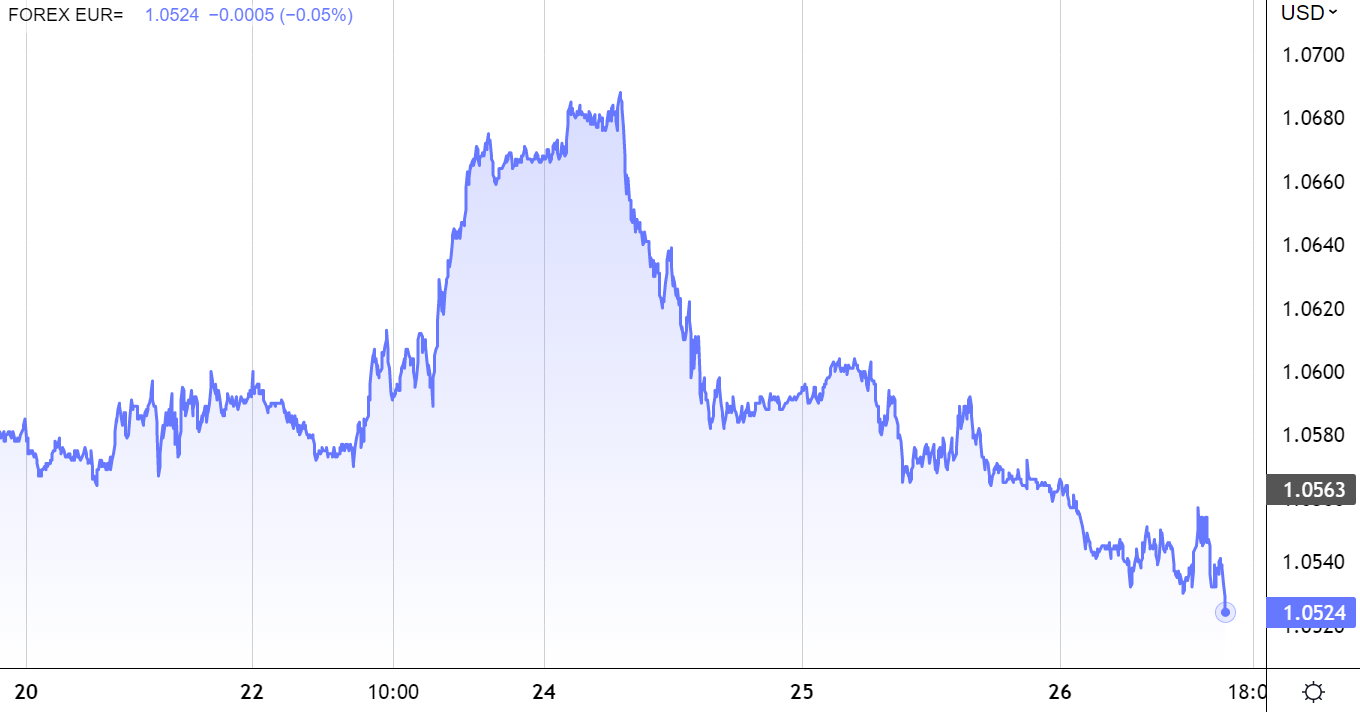Ebury analyzes the situation
Roman Ziruk, Matthew Ryan, CFA
As was widely expected, the ECB kept rates unchanged at its October meeting, pausing after ten consecutive interest rate increases. The meeting did not bring a lot of additional context, and traders largely shrugged it off as a result.
The unanimous decision to keep rates unchanged was not a surprise, and attention this week centred on the rhetoric of the Governing Council and president Lagarde. The statement after the monetary policy meeting was little changed from September. The ECB confirmed that inflation is expected to stay ‘too high for too long’ and that future decisions will ‘ensure that its policy rates will be set at sufficiently restrictive levels for as long as necessary’. However, the bank had no choice but to acknowledge economic and financial reality, noting a marked decline in inflation in September, and a forceful transmission of past rate increases into financing conditions.
During her press conference, president Lagarde largely stuck to the script. She acknowledged the weakening of the Euro Area economy and reiterated that risks to growth remained skewed to the downside. She also warned that the bloc’s labour market, which has so far supported economic activity in the Euro Area, is weakening. The bank confirmed that geopolitical risks, which are currently back in the spotlight amid the ongoing war between Israel and Palestine, could weigh on growth. There is also a general acceptance that the conflict could contribute towards higher energy prices and inflation.
On the topic of monetary policy, Lagarde stressed data dependence. She failed to entirely close the door to further hikes, and refused to comment on whether we have seen a peak in rates. As for the possibility of rate cuts, she stressed that it was not discussed at this week’s meeting, and that such a debate would be ‘absolutely premature’, confirming our expectations. She also mentioned that there was no discussion on the pandemic bond-buying programme, the PEPP, and the bank’s minimum reserve requirements.
These comments were all mostly as anticipated, and investors simply do not believe her remarks that further hikes are possible. We continue to think that the hiking cycle is over, and see a far greater chance that the next move in rates is lower. As things stand, swap markets are pricing in the first interest rate cut in April next year, with a total of around 70 basis points of cuts now eyed in 2024, roughly in line with that of the Fed.
As we anticipated ahead of the meeting, the reaction in the euro following today’s ECB communications was rather limited. The EUR/USD pair continues to hover above the 1.05 level, not far from its recent lows, as investors digest further evidence of a gap between the economies on both sides of the Atlantic.
EUR/USD





